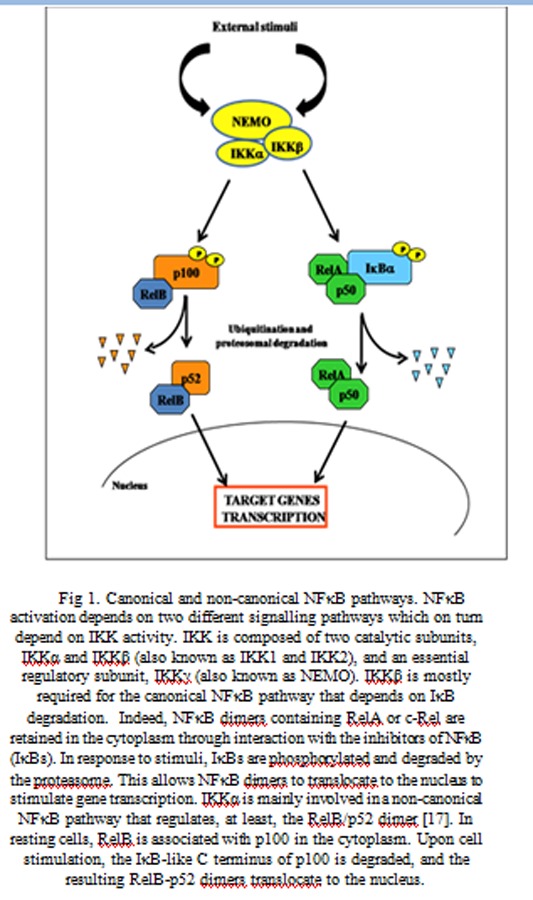Fig 1.

Canonical and non-canonical NFκB pathways. NFκB activation depends on two different signalling pathways which on turn depend on IKK activity. IKK is composed of two catalytic subunits, IKKα and IKKβ (also known as IKK1 and IKK2), and an essential regulatory subunit, IKKγ (also known as NEMO). IKKβ is mostly required for the canonical NFκB pathway that depends on IκB degradation. Indeed, NFκB dimers containing RelA or c-Rel are retained in the cytoplasm through interaction with the inhibitors of NFκB (IκBs). In response to stimuli, IκBs are phosphorylated and degraded by the proteasome. This allows NFκB dimers to translocate to the nucleus to stimulate gene transcription. IKKα is mainly involved in a non-canonical NFκB pathway that regulates, at least, the RelB/p52 dimer [17]. In resting cells, RelB is associated with p100 in the cytoplasm. Upon cell stimulation, the IκB-like C terminus of p100 is degraded, and the resulting RelB-p52 dimers translocate to the nucleus.
